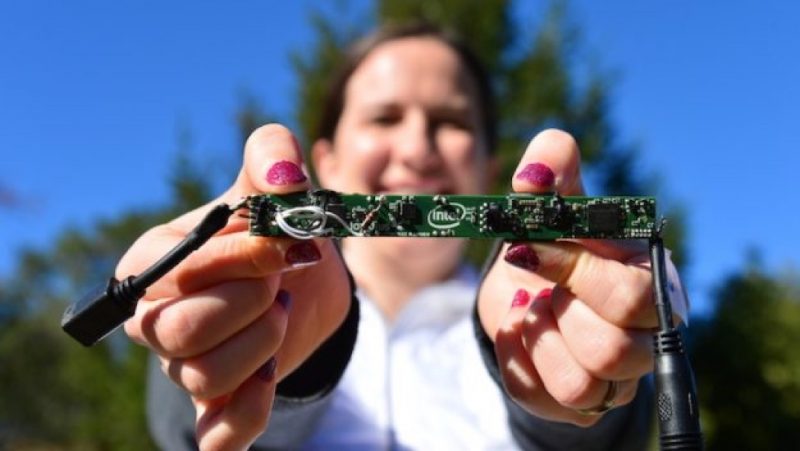Artificial Intelligence In Wildlife Conservation: Progress And Concerns

Table of Contents
AI-Powered Monitoring and Tracking
AI is transforming wildlife monitoring and tracking, providing unprecedented insights into animal populations and their environments. This progress is largely driven by advancements in several key areas:
Real-time Wildlife Tracking
AI is enhancing traditional methods through the integration of sophisticated technologies:
- Image recognition: AI algorithms analyze images from camera traps, drones, and satellite imagery, automatically identifying species, counting individuals, and assessing their health. This automation significantly reduces the time and resources required for manual analysis. For example, researchers can now identify endangered tigers from camera trap images with remarkable accuracy, enabling more efficient monitoring of their populations.
- Anomaly detection: AI can detect unusual patterns in animal behavior or environmental conditions, signaling potential threats like poaching activity, disease outbreaks, or habitat degradation. Early detection allows for swift intervention and mitigation strategies.
- GPS tracking and movement analysis: AI algorithms analyze data from GPS collars to model animal movements, predict migration patterns, and identify critical habitats. This information informs conservation strategies aimed at protecting crucial areas and migration corridors.
The advantages of real-time data collection are significant:
- Quicker response times: Immediate alerts to threats allow for rapid intervention, increasing the chances of successful conservation efforts.
- Improved decision-making: Real-time data provides a more comprehensive understanding of ecological dynamics, leading to more informed management decisions.
- Enhanced efficiency: Automation reduces the time and resources required for data analysis and interpretation.
However, challenges remain:
- High initial costs: Implementing AI-powered monitoring systems can be expensive, requiring substantial investment in hardware, software, and expertise.
- Technical expertise: Successful implementation necessitates skilled personnel to operate and maintain the technology, which may be scarce in some regions.
- Data storage and management: The large volumes of data generated require robust storage and management solutions.
Predictive Modeling for Habitat Loss
AI algorithms are increasingly used to predict future habitat loss based on various environmental factors:
- Climate data: AI models can analyze climate change projections to predict shifts in species distributions and potential habitat loss.
- Deforestation rates: Analysis of satellite imagery allows AI to identify areas at high risk of deforestation, informing proactive conservation efforts.
- Land use changes: AI can model the impact of human activities on wildlife habitats, guiding land-use planning and mitigating negative consequences.
The ability to predict habitat loss allows for:
- Proactive conservation planning: Conservationists can develop preventative measures, such as habitat restoration or protected area expansion, before significant loss occurs.
- Targeted interventions: Resources can be strategically allocated to areas most at risk, maximizing conservation impact.
However, the accuracy of predictive models depends on:
- Data quality and availability: Robust and comprehensive datasets are essential for accurate predictions.
- Model complexity: Developing sophisticated models capable of accounting for complex ecological interactions can be challenging.
Combating Poaching and Illegal Wildlife Trade
AI offers significant potential in disrupting illegal wildlife trade networks:
AI-driven Surveillance and Detection
AI is enhancing traditional surveillance methods:
- Facial recognition: AI can analyze surveillance footage to identify individuals involved in poaching activities (with strict ethical considerations regarding privacy and potential biases).
- Acoustic monitoring: AI can analyze soundscapes to detect gunshots or other suspicious sounds, providing early warnings of poaching incidents.
- Drone integration: AI-powered drones equipped with cameras and sensors can patrol protected areas, detecting poaching activities and monitoring wildlife populations.
This technology allows for:
- Increased detection rates: AI significantly improves the efficiency and effectiveness of anti-poaching efforts.
- Improved evidence gathering: AI-analyzed data provides strong evidence for prosecution, strengthening enforcement actions.
Supply Chain Analysis and Tracking
AI can help trace illegal wildlife products:
- Pattern recognition: AI can analyze trade data to identify patterns and anomalies indicative of illegal activities.
- Blockchain technology integration: Blockchain's transparency and immutability enhance the tracking of wildlife products through supply chains.
Challenges include:
- Data collection: Access to comprehensive trade data is crucial but often limited due to the clandestine nature of illegal activities.
- International cooperation: Effective enforcement requires international collaboration and data sharing.
Ethical Concerns and Challenges in AI for Wildlife Conservation
While offering remarkable potential, AI in wildlife conservation raises important ethical considerations:
Data Privacy and Security
The collection and use of wildlife data raise concerns about:
- Data breaches: Sensitive data must be protected from unauthorized access and misuse. Encryption and secure storage protocols are vital.
- Ethical guidelines: Clear ethical guidelines and regulations are crucial to ensure responsible data handling and minimize risks.
Bias in Algorithms and Data
Biases in AI algorithms and datasets can lead to:
- Inaccurate results: Biased data can lead to flawed predictions and misinformed conservation strategies.
- Unfair outcomes: AI systems can perpetuate existing inequalities if not carefully designed and monitored. Using diverse and representative datasets is paramount.
Accessibility and Equity
Ensuring equitable access to the benefits of AI is crucial:
- Capacity building: Training and education programs are necessary to develop local expertise in AI technologies.
- Technology transfer: Promoting the transfer of AI technologies to developing countries can ensure their participation in conservation efforts.
- Collaborative partnerships: Collaborative partnerships are essential for equitable resource allocation and knowledge sharing.
Conclusion
Artificial Intelligence in Wildlife Conservation presents unprecedented opportunities for addressing the biodiversity crisis. AI-powered monitoring and tracking systems, predictive modeling for habitat loss, and sophisticated tools for combating poaching and illegal wildlife trade offer significant advancements. However, realizing the full potential of AI requires careful consideration of ethical concerns, addressing issues related to data privacy, algorithmic bias, and equitable access. The future of AI in wildlife conservation depends on responsible development and implementation, ensuring that these powerful technologies are used effectively and ethically to protect our planet's precious biodiversity. Learn more about the role of AI-driven conservation and support organizations working towards the responsible application of these transformative technologies. The future of wildlife conservation may well depend on it.

Featured Posts
-
 Back From Surgery Christian Yelich Makes Spring Training Debut
Apr 23, 2025
Back From Surgery Christian Yelich Makes Spring Training Debut
Apr 23, 2025 -
 Harvard Faces Trump Administration In Landmark Lawsuit
Apr 23, 2025
Harvard Faces Trump Administration In Landmark Lawsuit
Apr 23, 2025 -
 Milwaukee Brewers Steal Nine Bases In Four Innings Setting New Record
Apr 23, 2025
Milwaukee Brewers Steal Nine Bases In Four Innings Setting New Record
Apr 23, 2025 -
 La Fires Price Gouging Allegations Surface Amidst Housing Crisis
Apr 23, 2025
La Fires Price Gouging Allegations Surface Amidst Housing Crisis
Apr 23, 2025 -
 Navigating The Chinese Market The Struggles Of Bmw Porsche And Other Auto Brands
Apr 23, 2025
Navigating The Chinese Market The Struggles Of Bmw Porsche And Other Auto Brands
Apr 23, 2025
